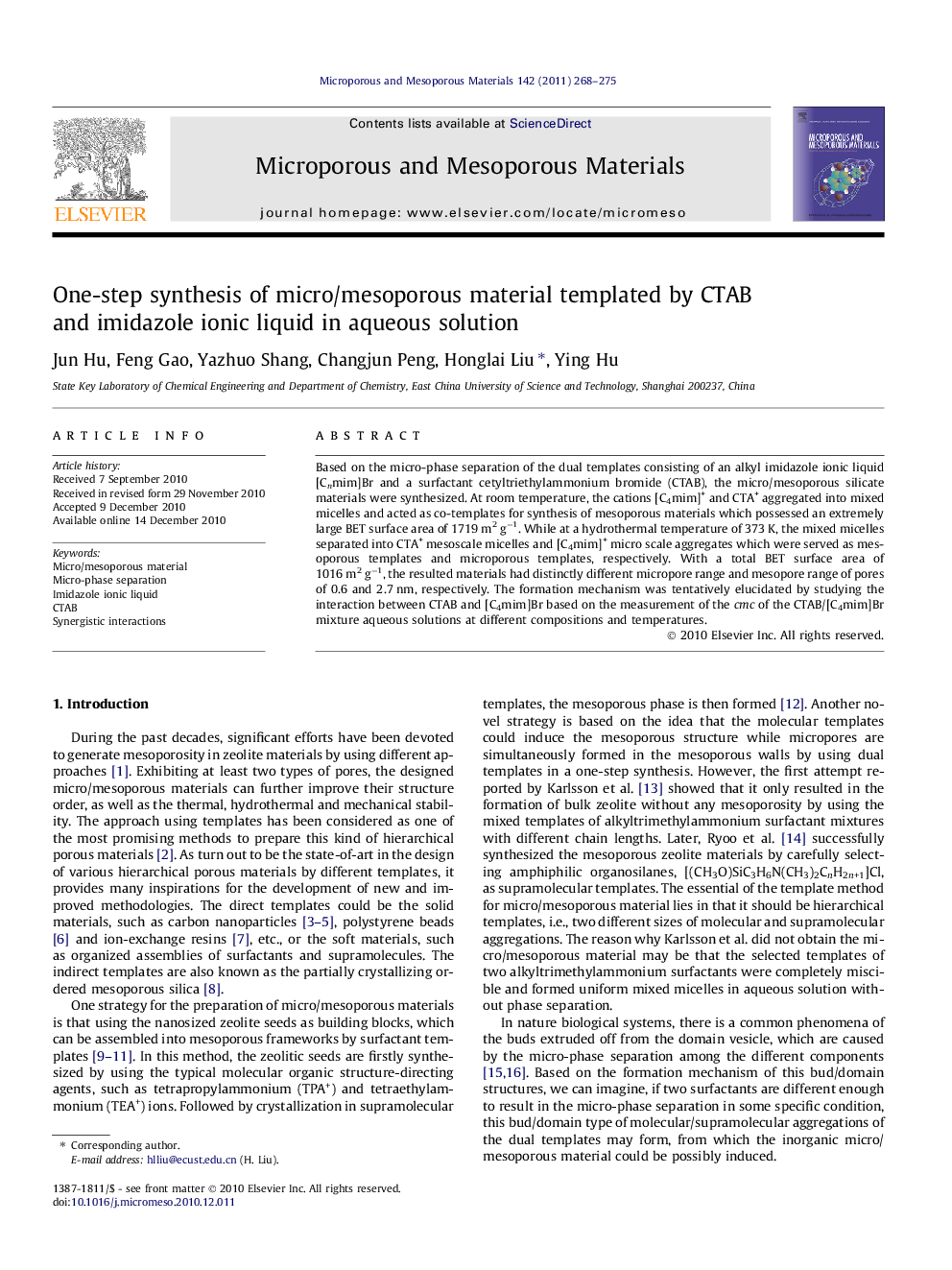| Article ID | Journal | Published Year | Pages | File Type |
|---|---|---|---|---|
| 74645 | Microporous and Mesoporous Materials | 2011 | 8 Pages |
Based on the micro-phase separation of the dual templates consisting of an alkyl imidazole ionic liquid [Cnmim]Br and a surfactant cetyltriethylammonium bromide (CTAB), the micro/mesoporous silicate materials were synthesized. At room temperature, the cations [C4mim]+ and CTA+ aggregated into mixed micelles and acted as co-templates for synthesis of mesoporous materials which possessed an extremely large BET surface area of 1719 m2 g−1. While at a hydrothermal temperature of 373 K, the mixed micelles separated into CTA+ mesoscale micelles and [C4mim]+ micro scale aggregates which were served as mesoporous templates and microporous templates, respectively. With a total BET surface area of 1016 m2 g−1, the resulted materials had distinctly different micropore range and mesopore range of pores of 0.6 and 2.7 nm, respectively. The formation mechanism was tentatively elucidated by studying the interaction between CTAB and [C4mim]Br based on the measurement of the cmc of the CTAB/[C4mim]Br mixture aqueous solutions at different compositions and temperatures.
Graphical abstractThe micro-phase separation triggered between [C4mim]Br and CTAB at higher hydrothermal temperature to form suitable molecular and supermolecular aggregations which successfully template the micro/mesoporous composites.Figure optionsDownload full-size imageDownload as PowerPoint slideResearch highlights► We first introduce the micro-phase separation (MPS) concept to select dual templates. ► We select IL of [C4 mim]Br and CTAB as the dual templates to produce micro/mesoporous materials. ► At room T, IL and CTAB aggregate together to induce the materials with extremely large surface area. ► At high temperature, MPS occurs between IL and CTAB, which induce the micro/mesoporous materials. ► IL can act as different function roles at different compositions and temperatures.
